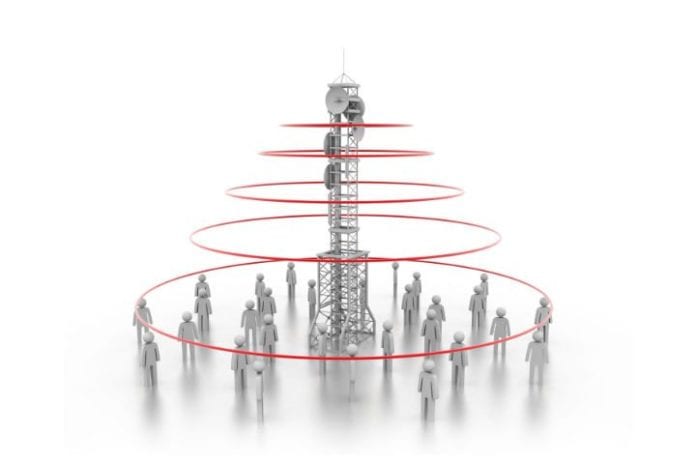The Spice Girls have been back again (at writing) nwith a reunion tour and a souvenir t-shirt. It is a nostalgia trip, for sure – in terms of the songbook at play, and the industrial mechanisms grinding into gear behind it. To be clear, this last accusation is only about the t-shirt – that t-shirt – which gained brief notoriety at the start of 2019. The first tour dates sold in minutes, and the whole circus might well showcase all manner of digital pyrotechnics. But that is not why we are here.
The t-shirt was for a charity push in the UK. The problem was the factory workers that made it, in Bangladesh, had laboured in “inhuman conditions”. The fact the £19.40 t-shirt was made to raise money for equal rights for women made the affair seem worse judged.
The press had a field day, of course. But the episode also highlighted the lack of transparency, and of progression, within the supply chain industry, in apparel and in general. Most technological advances in the supply chain have been around efficiency and productivity – straight business, in other words.
The ethics of trading items like t-shirts have been a secondary concern, and brands (for this is a brand issue) are only latterly coming to modernise their ‘chains of custody’, which vouch for the circumstances of their materials, products, and human dependents along the way. This effort follows the modernisation of their supply chains for straight business reasons, with the introduction of technologies to track and trace products, automate schedules and machines, and to start to record their provenance and transactions, immutably, on blockchains.
Jeroen Scheepmaker, associate director of sustainability solutions at Navigant Research, says digitally progressive retailers like Walmart and IKEA are, among other pursuits, collecting data from throughout their supply chains to hash into financial data and reveal new purchasing strategies and schedules.
“There’s a will to win. It’s under development. That’s one part of it,” he says. The flip-side is the efforts of brands to take data about sustainability from their suppliers. in order to create a cumulative picture of the environmental and human cost of their productions, at points along the chain, going right back to digging the raw materials.
“Automotive manufacturers, for instance, are now focusing on the materials they’re using in the cars. They are asking you, the supplier of steel, and you, the supplier of aluminium, to provide the environmental impact of your materials,” says Scheepmaker.
The problem is the supplier holds up its hands, and shrugs. “‘I buy my aluminium from five or six different suppliers, and I haven’t a clue what ends up in your factory’.” The response from both customers and suppliers in manufacturing has been to impose order on the direction of trade.
“They are trying to allocate certain materials, so they know it is coming from certain production facilities,” explains Scheepmaker. This way, they have created a chain of custody around their material goods, he explains. Technologies like blockchain have a role to play, he suggests.
“That’s where I see blockchain cropping up, but there are big steps to go.”
Manufacturing, of course, is varied discipline. A chain of custody for automakers, mapping big clanking factories, is challenging enough, even as a manual exercise on a spreadsheet. IoT tracking technologies might be justified for discrete low-volume parts.
But the apparel sector, producing cheap garments from poor circumstances, where digital infrastructure is lacking to start with, is another challenge, entirely. That said, the fashion industry is well exercised on the tightrope between business value and business ethics, and has checks in place.
The Spice Girls episode, featuring Bangladeshi firm Interstoff Apparels, just shows existing checks are not definitive.
“Many companies are completely mapping the complex supply chain to understand their brand and reputation risks. But it’s done in a really low-tech way,” says Scheepmaker. He talks about the number of sustainability officers employed by the big high-street fashion retailers.
Is anyone using new digital technologies to more efficiently and accurately map this chain of custody, among the clothes brands? Is anyone not doing it by hand? “No one,” he says. “Because it’s just really hard to obtain data from the suppliers – they don’t even have laptops, for instance.”
There are initiatives by the apparel sector to structure its supply chain with technology, and bring new levels of transparency. The Higg Index, developed by the Sustainable Apparel Coalition, is a suite of digital tools that enables brands, retailers, and facilities to accurately measure and score a company or product’s sustainability performance.
It is a shared database, effectively. The idea is hard data reveals naked truths, which should force the clothing industry to make improvements that protect workers, communities, and the environment.
Could the Spice Girls have been saved from their recent ugly press by putting their suppliers on a blockchain? Probably not, just because of compatibility issues. But the authors of the t-shirt should have stuck to the principles of it, and pushed for better checks.
(It might be noted, the Spice Girls have told of their “shock”, the online retailer that sold the t-shirts, Represent, has claimed “full responsibility”, and Interstoff has said reports are “simply not true”.)
But the Higg Index is a start; other industries are arguably better positioned than the fashion sector to make use of digital technologies for sustainability and fairness. But, to editorialise momentarily, change will come when end users demand it, and sustainability is a growth driver for business.
People power comes in waves, and a set is building around sustainability. Scheepmaker references uproar around meat imports in The Netherlands, from Poland and Spain. But these waves haven’t crashed on the shore, yet. “Consumers are mostly driven by price, still; sustainability is a bonus,” he says.
Check out the report from Enterprise Iot Insights: From supply chain to demand chain – how IoT and AI are enabling the supply chain to flex to changing demand.

